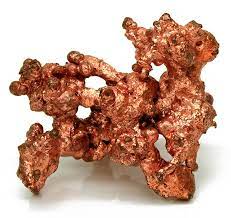Identity.
Copper is a chemical element, number 29 on the periodic table of elements. The copper element symbol is Cu, from the Latin “cuprum”. It is a ductile metal with a reddish-brown color.
Atomic Structure:
The nucleus consists of 29 protons (red) and 34 neutrons (blue). 29 electrons (green) bind to the nucleus, successively occupying available electron shells (rings).
History.
Evidence suggests humans used copper as early as 10,000 years ago. Its natural occurrence as nuggets and its malleability made it easy to shape into tools and ornaments. Over time, people discovered they could heat and hammer copper to create even more useful objects, from weapons and utensils to decorative items. This widespread adoption across various cultures solidified copper's place as one of humanity's first essential metals.
Ancient civilizations across the globe, from Mesopotamia to Egypt and the Indus Valley, incorporated copper into their societies. They used it for coinage, writing implements, and even medical instruments. As technology advanced, copper's unique properties, like its conductivity and resistance to corrosion, made it valuable for electrical applications, plumbing, and construction. Today, copper remains a vital material, playing a crucial role in everything from renewable energy systems to modern electronics.

